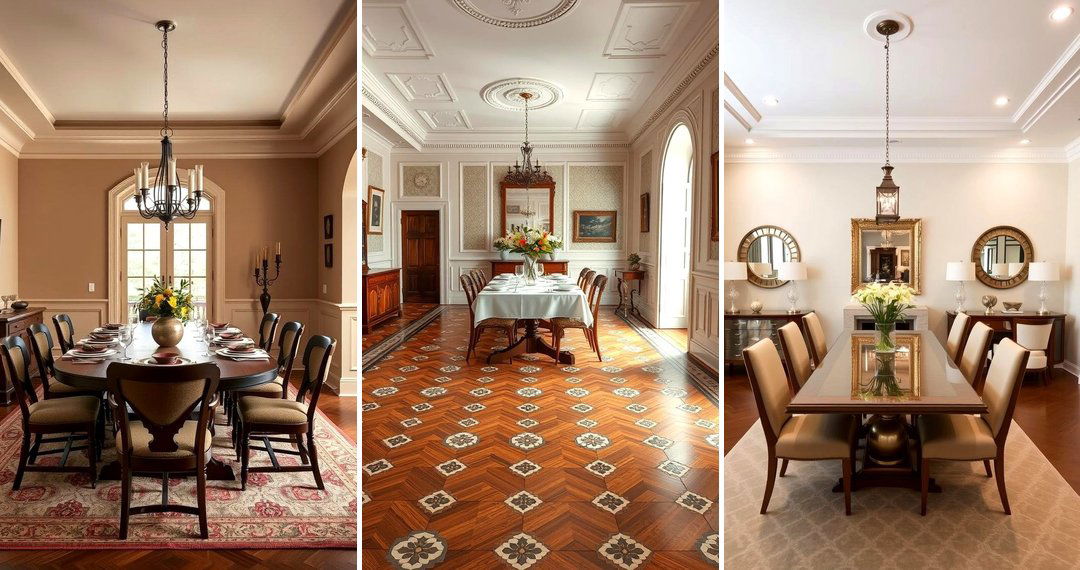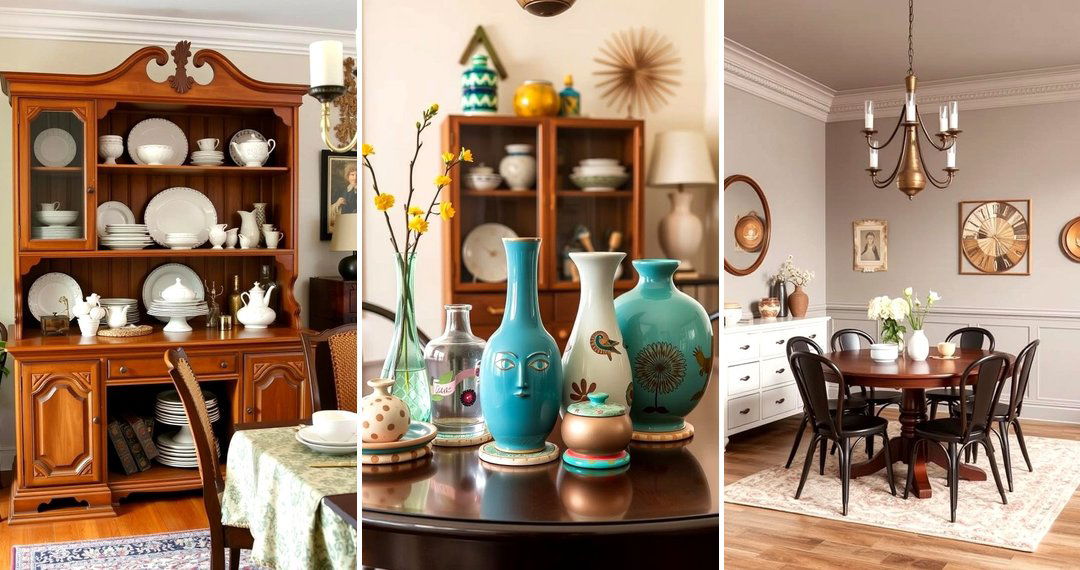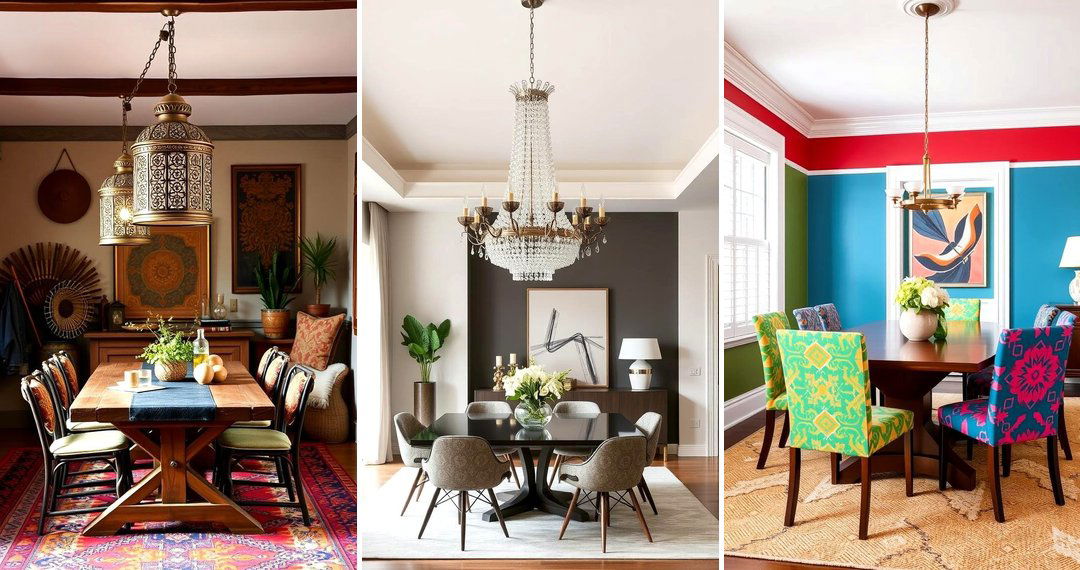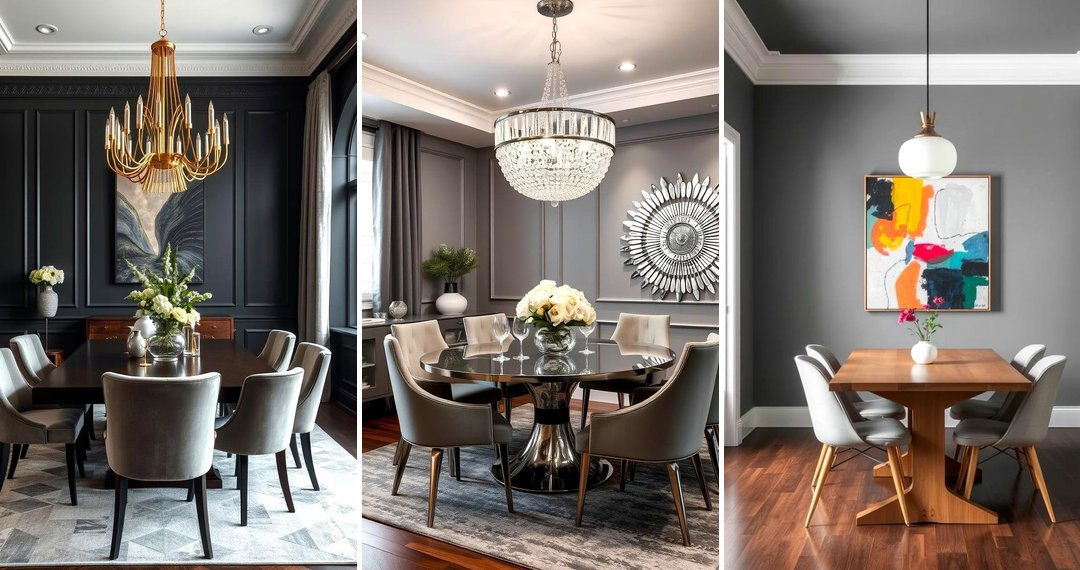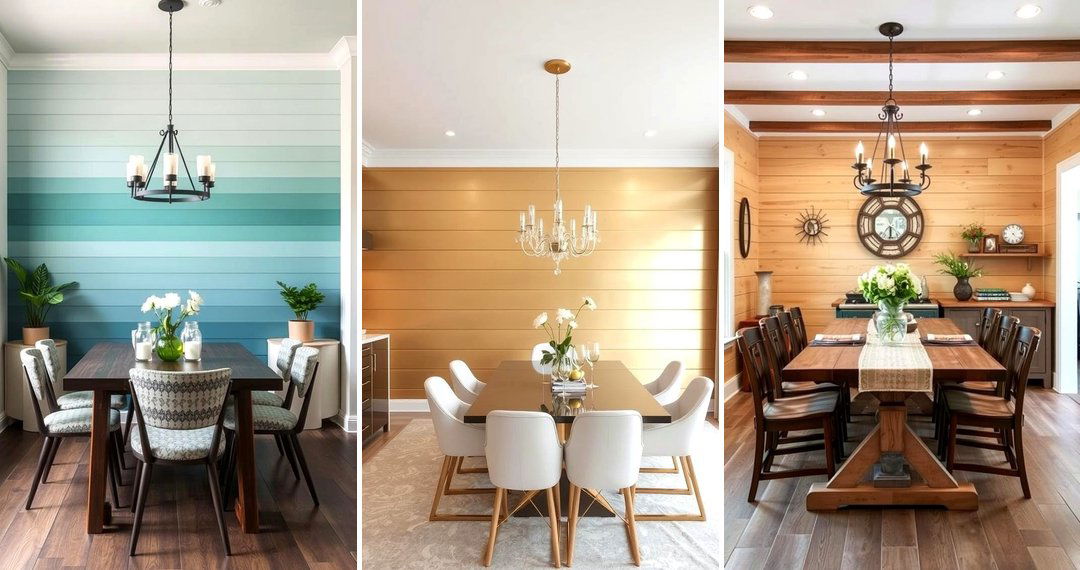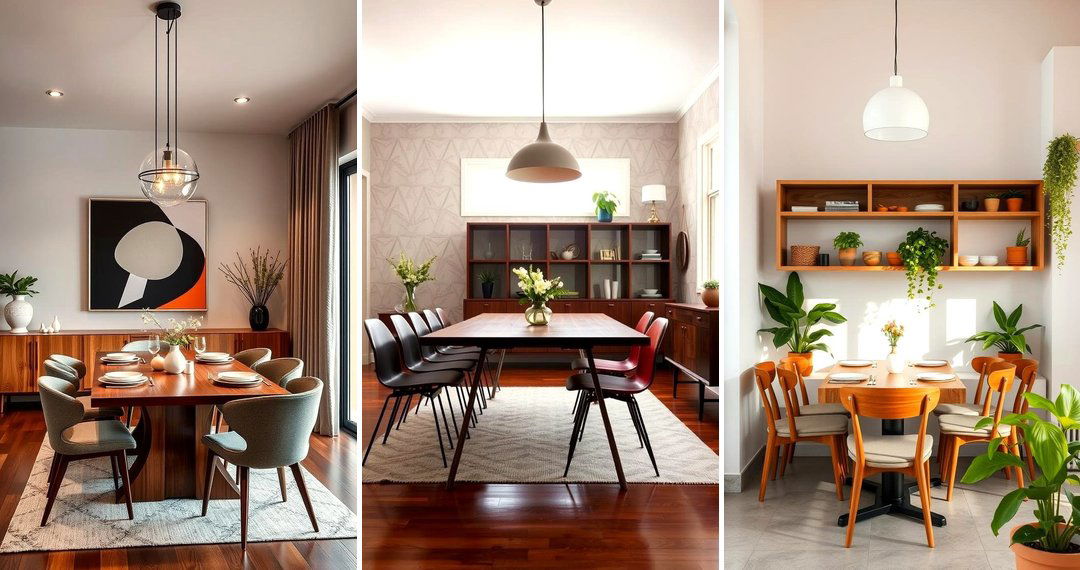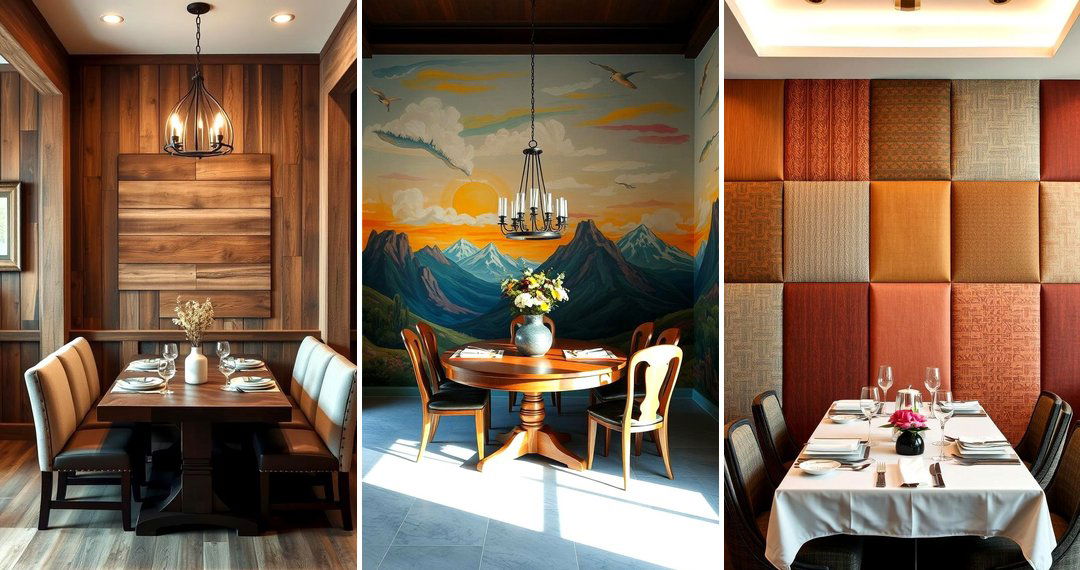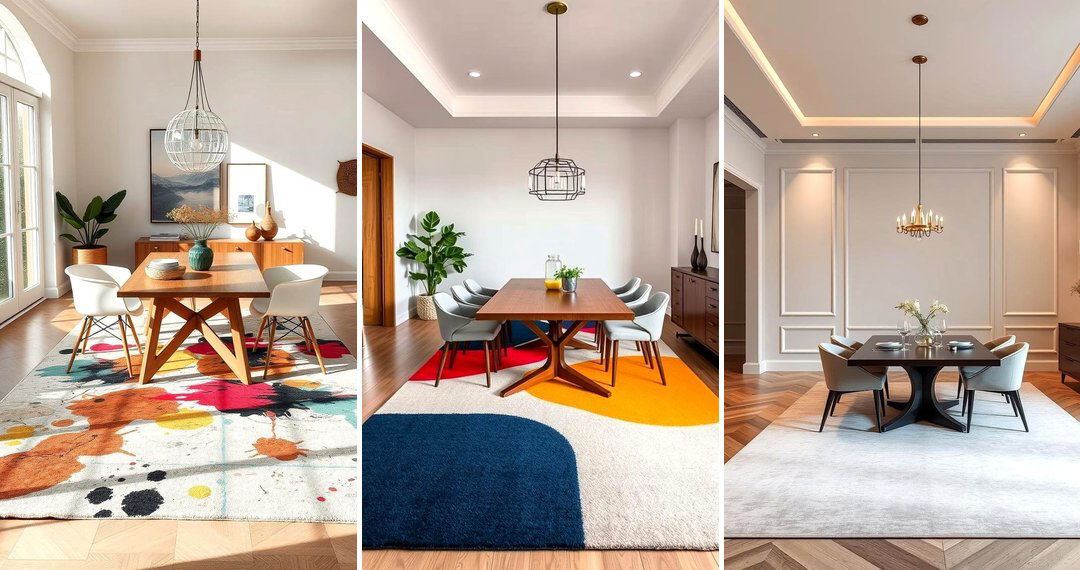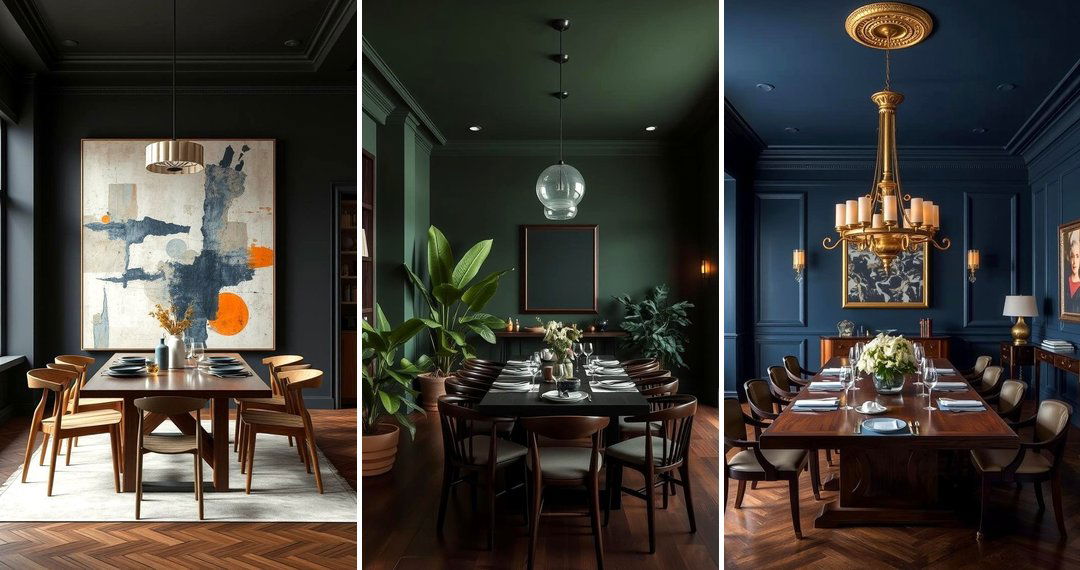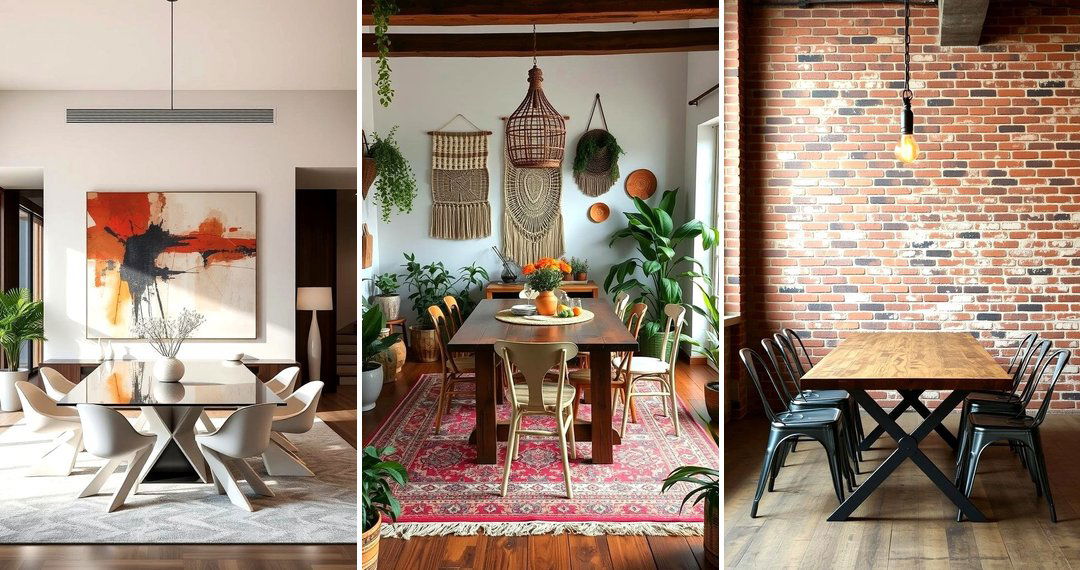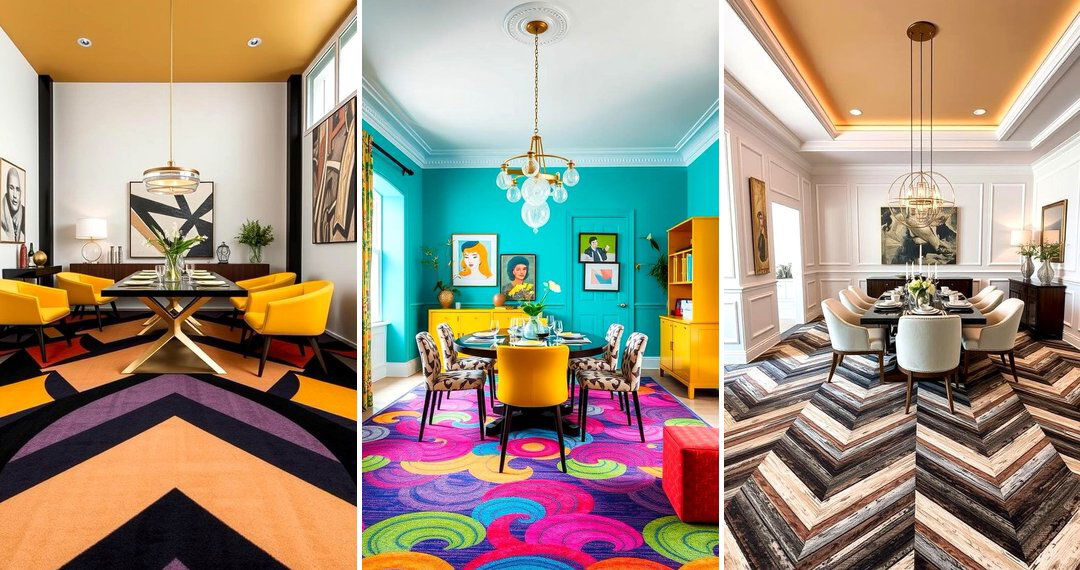The dining room, often the heart of a home, serves as a gathering place for meals, conversations, and cherished moments. Achieving the right ambiance is crucial, and the transitional style offers a perfect balance. It harmoniously blends the comfort and familiarity of traditional design with the sleekness and simplicity of modern aesthetics, creating spaces that feel both elegant and inviting. This approach allows for a personalized touch, where cherished traditional pieces can coexist beautifully with contemporary finds. Ready to explore how to craft your own stunning dining space? Let's delve into a wealth of inspiring transitional dining room ideas.

1. Blending Modern Chairs with a Traditional Table
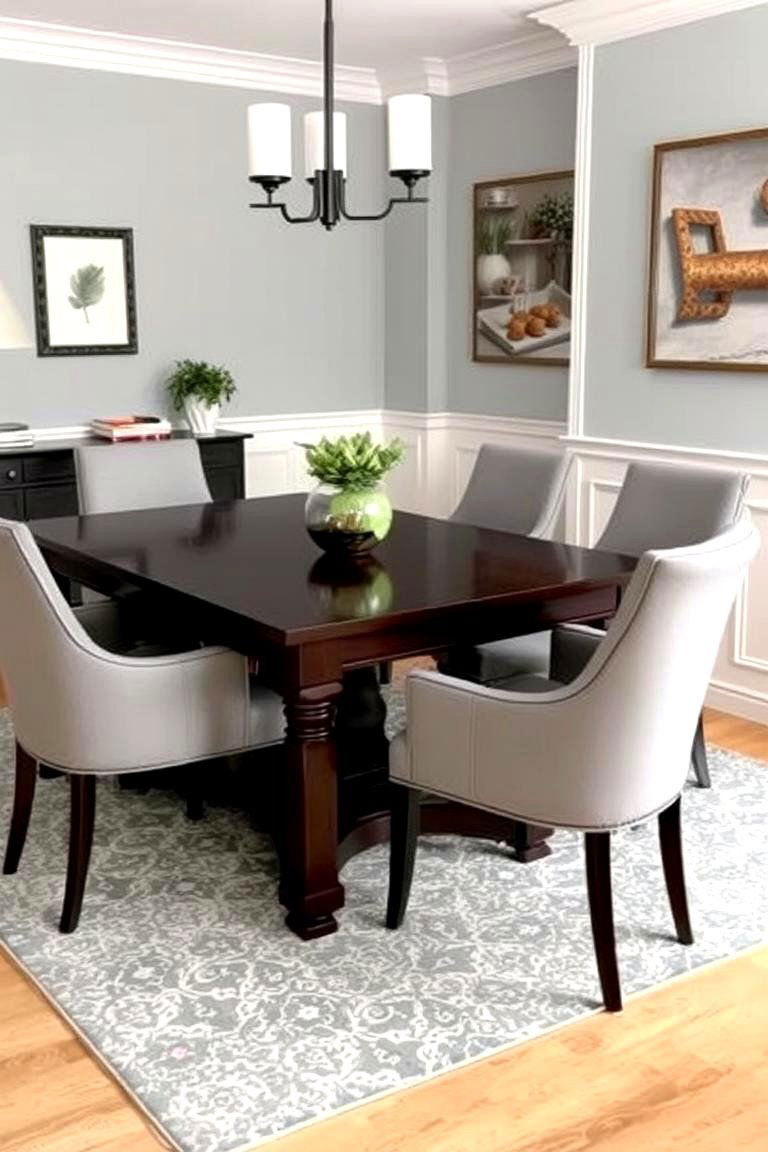
Imagine the timeless elegance of a solid wood dining table, its rich history and craftsmanship speaking volumes. Now, picture this classic piece surrounded by sleek, armless chairs with clean lines and perhaps a touch of metal detailing. This unexpected pairing is a hallmark of transitional design, offering a delightful contrast. The traditional table provides a sense of warmth and heritage, while the modern chairs inject a contemporary vibe, preventing the space from feeling stuffy or outdated. This blend not only creates visual interest but also offers comfortable seating for today's lifestyle.
2. Incorporating a Statement Chandelier in a Clean-Lined Space

Consider a dining room with a relatively simple and uncluttered design – perhaps featuring neutral walls and minimalist furniture. To elevate this space and add a touch of drama, introduce a statement chandelier. This could be a modern fixture with geometric shapes and metallic finishes, or even a more ornate piece with crystal accents, but with a streamlined silhouette. The key is that the chandelier acts as a focal point, drawing the eye upwards and adding a layer of sophistication to the otherwise understated room. It's a fantastic way to infuse personality without overwhelming the space.
3. Mixing Warm Wood Tones with Sleek Metal Accents

One of the defining characteristics of transitional design is the thoughtful combination of different materials and textures. Think about pairing a warm, natural wood dining table with chairs that feature sleek metal legs or detailing. This interplay of organic and industrial elements creates a sense of balance and visual intrigue. The warmth of the wood provides a welcoming and inviting feel, while the cool touch of metal adds a contemporary edge. This combination can be extended to other elements in the room, such as lighting fixtures or decorative accessories.
4. Using Neutral Color Palettes with Pops of Bold Color

A foundation of neutral colors, such as soft grays, creams, and beiges, is often used in transitional dining rooms to create a serene and versatile backdrop. However, this doesn't mean the space has to be devoid of personality. Introduce pops of bold color through accent pieces like artwork, throw pillows on any nearby seating, or even a vibrant rug. These splashes of color add energy and visual interest, preventing the neutral palette from feeling monotonous. The beauty of this approach is the flexibility it offers – you can easily change the accent colors to refresh the look of your dining room.
5. Layering Textures with Rugs, Fabrics, and Wall Treatments

Bringing depth and visual interest to a transitional dining room can be effectively achieved through the strategic layering of textures. Imagine a smooth, polished wood floor softened by a plush rug with a subtle pattern. Then, consider the dining chairs upholstered in a textured fabric like linen or velvet. Even the walls can contribute to this layering, perhaps with a textured wallpaper or a carefully chosen piece of art with tactile elements. This combination of different textures creates a rich and inviting atmosphere, making the dining room feel more comfortable and visually appealing.
6. Adding Modern Art to a Traditionally Styled Room

For a truly unique transitional feel, consider incorporating modern art into a dining room that leans more towards traditional styling. A bold, abstract painting or a contemporary sculpture can create a striking contrast against classic furniture and architectural details. This unexpected juxtaposition adds a layer of sophistication and personality to the space, showcasing a curated and well-thought-out design. The modern art acts as a conversation starter and elevates the overall aesthetic of the room.
7. Featuring a Mirrored Wall to Enhance Space and Light

Looking for a way to make your dining room feel larger and brighter? A mirrored wall can be a fantastic solution in a transitional setting. Whether it's a full wall or a series of strategically placed mirror panels, the reflection of light and the illusion of expanded space can dramatically transform the room. Choose a mirror with a clean, modern frame or even an antique-style frame for an interesting contrast. This design element not only enhances the visual appeal but also adds a touch of glamour.
8. Combining Formal Drapery with Simple Window Treatments

Window treatments play a significant role in setting the tone of a dining room. In a transitional space, consider combining the elegance of formal drapery with the simplicity of blinds or shades. For instance, you might have floor-to-ceiling drapes in a luxurious fabric framing simple roller shades that provide privacy and light control. This approach offers the best of both worlds – the sophistication of flowing fabric and the clean lines of a more modern treatment.
9. Introducing Natural Elements like Wood and Stone

Bringing elements of the outdoors inside can create a sense of warmth and connection to nature in a transitional dining room. Consider incorporating natural materials like wood and stone through furniture, flooring, or decorative accents. A live-edge wood table, stone coasters, or even a display of natural branches can add an organic touch that complements both traditional and modern styles. These elements introduce texture and visual interest, making the space feel more inviting and grounded.
10. Creating a Focal Point with a Unique Credenza or Buffet

A well-chosen credenza or buffet can serve as both a functional storage piece and a stylish focal point in a transitional dining room. Opt for a piece that blends traditional craftsmanship with modern design elements, such as clean lines and interesting hardware. This piece can be used to display decorative items, store tableware, or even serve as a bar area. Its presence adds visual weight and anchors the room, contributing to a balanced and well-designed space.
11. Balancing Open Shelving with Closed Cabinetry

In a transitional dining room, consider a balanced approach to storage by incorporating both open shelving and closed cabinetry. Open shelves provide an opportunity to display beautiful dishes, glassware, or decorative objects, adding visual interest and personality. Closed cabinets, on the other hand, offer discreet storage for less visually appealing items, helping to keep the room feeling tidy and organized. This combination of storage solutions ensures both functionality and aesthetic appeal.
12. Upholstering Dining Chairs in Contemporary Fabrics

Give your dining chairs a transitional update by reupholstering them in contemporary fabrics. Choose materials with clean lines and interesting textures, such as linen, velvet, or even a patterned fabric with a modern geometric design. This simple change can instantly transform the look and feel of your dining set, bridging the gap between traditional chair frames and a more modern aesthetic.
13. Pairing Classic Tableware with Modern Place Settings

The way you set your dining table can also contribute to the transitional style. Consider pairing classic tableware, such as traditional china or silverware, with modern place settings. This might involve using sleek, minimalist placemats or chargers, or incorporating contemporary glassware with clean silhouettes. This thoughtful combination of old and new creates an interesting visual dialogue on your dining table.
14. Integrating Technology Discreetly with Smart Lighting

While maintaining a sophisticated aesthetic is key in transitional design, incorporating modern technology can enhance functionality. Consider integrating smart lighting systems that allow you to adjust the ambiance of your dining room with ease. Opt for fixtures with clean, transitional designs that blend seamlessly with the overall style while offering the convenience of modern technology.
15. Designing a Banquette Seating Area with Modern Flair

For a more casual yet stylish dining experience, consider designing a banquette seating area. This can be particularly useful in smaller dining spaces or breakfast nooks. Give it a transitional touch by pairing a traditionally shaped banquette with modern upholstery and clean-lined accents like throw pillows or a contemporary table. This creates a cozy and inviting space that blends comfort with modern design sensibilities.
16. Using Geometric Patterns in Rugs or Textiles

Introducing geometric patterns through rugs, curtains, or upholstery can add a contemporary edge to a transitional dining room. Choose patterns that are bold but not overwhelming, such as simple stripes, chevrons, or abstract geometric shapes in a neutral or subtly contrasting color palette. These patterns can inject energy and visual interest without disrupting the overall balance of the space.
17. Incorporating Industrial-Style Lighting Fixtures

Industrial-style lighting fixtures, with their exposed bulbs and metal finishes, can add an unexpected yet stylish touch to a transitional dining room. Consider pendant lights hanging above the dining table or wall sconces with a raw, industrial aesthetic. These fixtures provide ample lighting while adding a contemporary and slightly edgy element to the otherwise balanced design.
18. Adding Sculptural Elements as Centerpieces or Decor
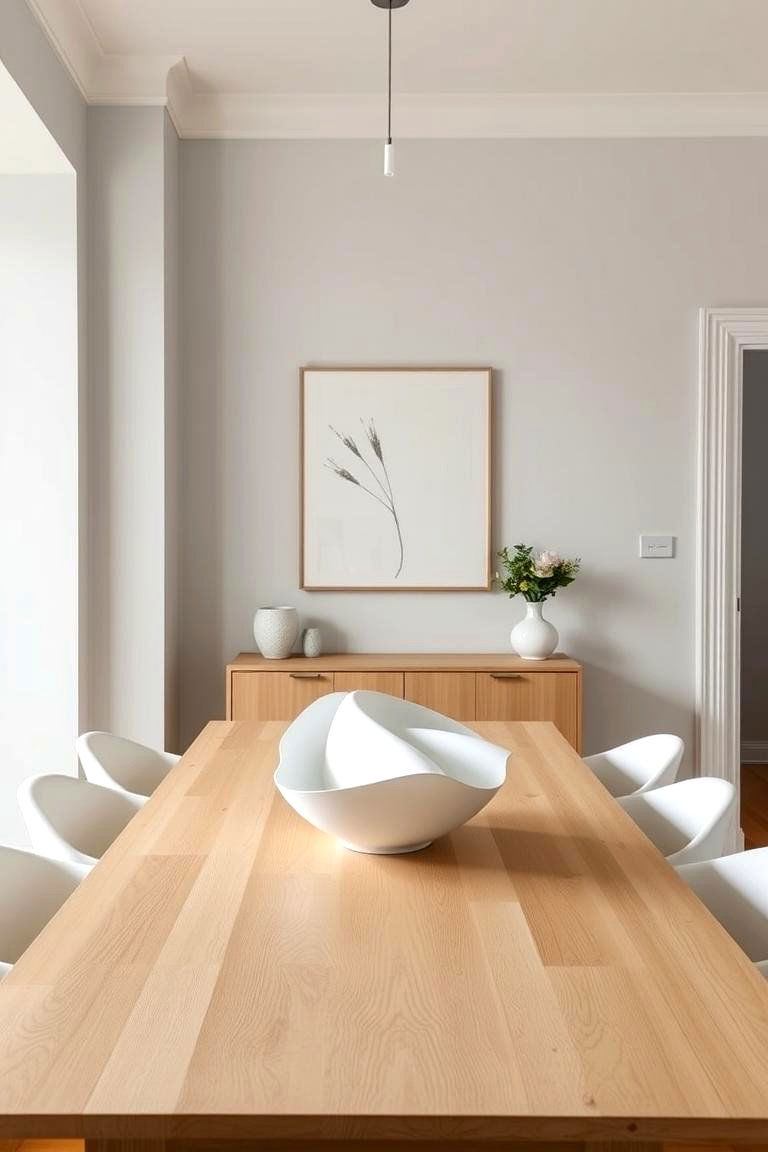
Sculptural elements can serve as captivating focal points and add a touch of artistic flair to a transitional dining room. This could be a modern sculpture placed on the dining table as a centerpiece, or even a series of smaller sculptural pieces displayed on a credenza or shelf. Choose pieces that complement the overall color palette and style of the room, adding a layer of visual interest and sophistication.
19. Combining Different Wood Finishes for Depth

Instead of sticking to a single wood finish, consider combining different wood tones in your transitional dining room. For example, you might pair a light oak table with chairs in a darker walnut finish. This creates visual depth and prevents the space from feeling too uniform. Ensure that the different wood tones complement each other to maintain a sense of harmony.
20. Utilizing Wallpaper with a Transitional Design

Wallpaper can be a powerful tool for adding personality and visual interest to a dining room. Opt for a wallpaper with a transitional design, which might feature a modern geometric pattern in a classic color palette or a subtle textured design that bridges traditional and contemporary styles. A carefully chosen wallpaper can elevate the overall aesthetic of the room.
21. Featuring a Bar Cart with Both Classic and Modern Elements

A bar cart can be a stylish and functional addition to a transitional dining room. Choose a cart that combines classic materials like wood or brass with modern elements like clean lines or glass shelves. This piece can serve as a focal point while providing a convenient spot for serving drinks and displaying barware.
22. Creating a Gallery Wall with Diverse Art Styles

A gallery wall is a fantastic way to personalize your dining room and showcase your taste. In a transitional space, consider curating a collection of art that includes both traditional and modern pieces. Mix different styles, mediums, and frame finishes to create an eclectic yet cohesive display that reflects your unique style.
23. Integrating Indoor Plants for a Touch of Nature

Adding indoor plants to your dining room can bring life, color, and a sense of freshness to the space. Choose plants that thrive in indoor environments and select stylish planters that complement your transitional decor. A large potted plant in a corner or a collection of smaller succulents on a windowsill can make a significant difference in the overall ambiance.
24. Designing a Dining Nook with a Blend of Styles
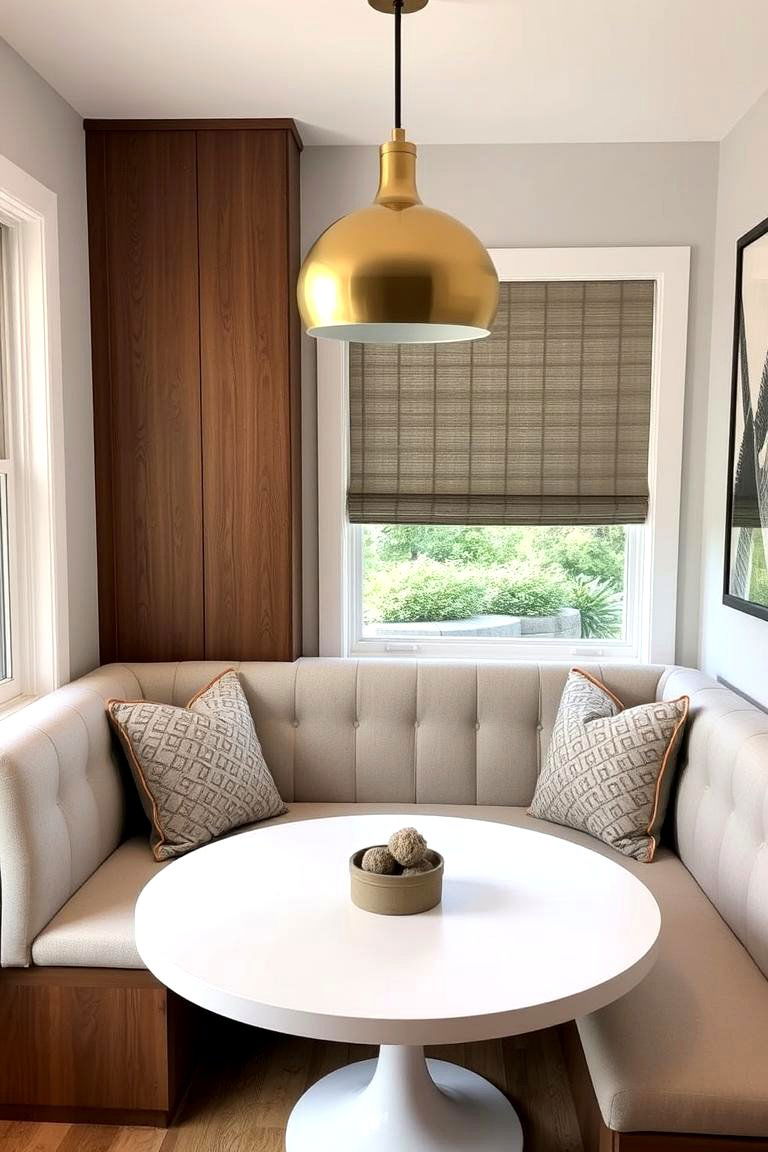
If you have a smaller dining area or a breakfast nook, embrace the transitional style by blending different elements. Combine comfortable, upholstered seating with a sleek, modern table. Add a statement lighting fixture that bridges the gap between traditional and contemporary aesthetics. This approach allows you to create a cozy and stylish dining space, no matter the size.
Conclusion:
Exploring the realm of 24 transitional dining room ideas reveals the beauty of balance and thoughtful combination. By artfully merging the timeless appeal of traditional design with the clean sophistication of modern aesthetics, you can cultivate a dining space that is both elegant and inviting. Whether it's the harmonious pairing of furniture styles, the strategic use of color and texture, or the incorporation of unique focal points, the key lies in creating a personalized environment that reflects your taste and lifestyle. Embrace these inspiring concepts to transform your dining area into a welcoming haven for memorable gatherings.


